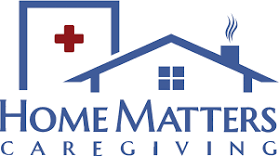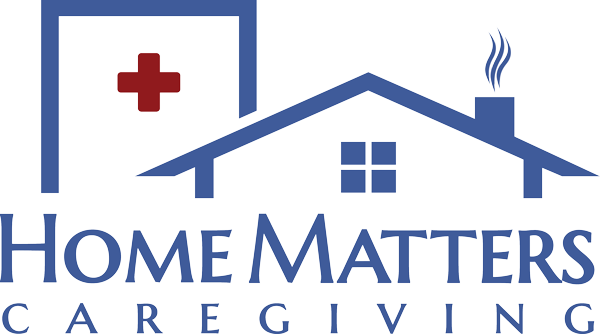Hospital to Home Care: Navigating the Journey
In the realm of healthcare, the transition from hospital to home care marks a critical phase in a patient's recovery journey. It's a pivotal shift where comprehensive support and seamless coordination are paramount. The journey begins amidst the clinical corridors and bustling wards of a hospital, where patients receive acute medical attention and round-the-clock care from dedicated professionals. Here, the focus is on stabilization and treatment, ensuring that patients are equipped with the necessary tools to progress towards healing. However, the true challenge often arises post-discharge, as patients navigate the complexities of transitioning back to their homes. This phase demands careful planning and integration of various healthcare services, from medication management to rehabilitation therapies. The goal is not only to ensure continuity of care but also to empower patients and their families with the knowledge and resources needed for a successful recovery journey. Join us as we delve into the intricacies of this transition, exploring practical tips, insights from healthcare experts, and empowering narratives of individuals who have navigated this path firsthand.
Navigating Insurance and Financial Considerations
Navigating the transition from hospital to home care involves not only medical considerations but also significant financial and insurance-related challenges. Understanding how insurance coverage works and exploring financial assistance options can help ease the burden and ensure quality care for your loved ones. Here’s a comprehensive guide to navigating insurance and financial considerations during this critical phase.

Understanding Your Insurance Coverage
Before transitioning to home care, it's crucial to understand what your insurance plan covers. Different plans, such as Medicare, Medicaid, and private insurance, have varying coverage for home health services, durable medical equipment (DME), and skilled nursing care. Review your policy documents or contact your insurance provider to clarify coverage specifics. Medicare typically covers home health services for those who qualify, including skilled nursing care, physical therapy, and home health aide services. Medicaid coverage varies by state but generally includes similar services. Private insurance plans may have more flexibility but often require pre-authorization and adherence to specific network providers. Understanding these nuances can prevent unexpected out-of-pocket expenses and ensure you utilize available benefits effectively.
Checking Eligibility for Medicare and Medicaid
Both Medicare and Medicaid offer crucial support for individuals requiring home care services. Medicare eligibility is primarily age-based (65 and older) or based on disability status (under 65). Medicaid eligibility, on the other hand, considers income and asset criteria and varies by state. To qualify for Medicare home health services, the patient must be homebound and require skilled care on an intermittent basis. Medicaid eligibility criteria can be complex, often requiring applicants to meet income thresholds and asset limits. Exploring eligibility early in the transition process allows families to plan for potential gaps in coverage and seek alternative financial assistance if needed.
Reviewing Coverage Limits and Exclusions
Insurance plans often have coverage limits and exclusions that can impact the extent of home care services covered. Understanding these limitations helps in planning and budgeting for out-of-pocket expenses. Coverage limits may include maximum allowable visits for certain services or restrictions on the duration of coverage. Exclusions can range from non-medical services like meal preparation to specific types of medical equipment deemed non-essential for home care. Reviewing these details with your insurance provider enables proactive decision-making, such as prioritizing essential services and exploring supplementary coverage options.
Preparing for Copayments and Deductibles
Even with insurance coverage, patients and their families may be responsible for co-payments, deductibles, or coinsurance. Planning for these costs ensures financial preparedness during the transition to home care. Co-payments are fixed amounts paid for each service received, while deductibles require patients to cover a specified amount before insurance coverage begins. Coinsurance refers to the percentage of costs shared between the patient and the insurer after meeting deductibles. Understanding these financial obligations helps in budgeting and exploring financial assistance programs that may alleviate some of the financial burdens associated with home care.
Exploring Financial Assistance Programs
Various financial assistance programs exist to support individuals transitioning from hospital to home care. These programs may include state-funded initiatives, non-profit organizations, or specific disease management programs. State-funded initiatives often provide additional support beyond Medicare or Medicaid coverage, such as respite care for caregivers or specialized equipment not covered by insurance. Non-profit organizations and disease-specific foundations offer grants or financial aid to eligible patients facing financial hardship due to medical expenses. Researching and applying for these programs early can provide crucial financial relief and ensure continuity of care without compromising quality.
Effective Communication with Healthcare Providers
Effective communication with healthcare providers is crucial during the transition from hospital to home care. Clear and proactive communication ensures that patients receive optimal care, medications are managed effectively, and any issues or concerns are addressed promptly. This guide explores strategies for fostering productive communication with healthcare providers to facilitate a smooth and successful transition home.
Establishing Open Lines of Communication
Building a rapport with healthcare providers begins with establishing open lines of communication. Introduce yourself and your role as a caregiver or patient, and express your willingness to collaborate in the care process. Initiate communication early in the hospital stay to discuss discharge plans, home care needs, and post-discharge follow-up. Establish preferred methods of communication, whether it's through phone calls, secure messaging platforms, or in-person consultations. Clarify expectations regarding communication frequency and response times to ensure timely access to healthcare guidance and support.
Active Listening and Asking Questions
Effective communication involves active listening to healthcare providers' instructions and asking pertinent questions to clarify any uncertainties. This ensures that both parties are aligned on treatment plans and expectations. During consultations, actively listen to healthcare providers' explanations about medications, treatment protocols, and home care instructions. Take notes or request written summaries to reinforce understanding and facilitate adherence to prescribed therapies. Encourage providers to use clear and jargon-free language to enhance comprehension, and don't hesitate to seek clarification on any aspects of care that are unclear or confusing.
Sharing Comprehensive Medical History
Provide healthcare providers with a comprehensive medical history, including current medications, allergies, past surgeries, and chronic conditions. This information aids in developing personalized care plans and prevents potential medication interactions or adverse reactions. Maintain an updated list of medications, including dosages and frequency, to share with healthcare providers during consultations. Disclose any recent changes in health status or symptoms that may impact ongoing treatment. Consider using medical history forms or electronic health records (EHRs) to streamline information sharing and ensure accuracy across healthcare settings.
Advocating for Patient Preferences and Needs
As a caregiver or patient advocate, communicate patient preferences, values, and treatment goals to healthcare providers. This collaborative approach promotes patient-centered care and enhances satisfaction with treatment outcomes. Discuss patient preferences regarding treatment options, pain management strategies, and lifestyle considerations that may influence recovery and quality of life at home. Advocate for personalized care approaches that align with the patient's cultural beliefs, dietary preferences, or social support network. Encourage healthcare providers to involve patients and caregivers in shared decision-making processes to foster mutual respect and trust.
Addressing Concerns and Reporting Changes
Promptly address any concerns or changes in the patient's condition with healthcare providers. Timely reporting enables proactive adjustments to treatment plans and prevents potential complications. Monitor the patient's health status closely after discharge and communicate any unexpected symptoms, side effects of medications, or signs of worsening condition to healthcare providers. Use designated contact numbers or online portals to report changes in a timely manner and seek guidance on appropriate next steps. Encourage open dialogue about concerns related to home care management, caregiver stress, or logistical challenges that may impact recovery outcomes.
Understanding Post-Hospital Care Needs
Understanding post-hospital care needs is essential for ensuring a smooth transition from hospital to home. It involves addressing both medical and non-medical requirements to support recovery and promote well-being. Here are key points to consider:
- Medical Care Requirements: Post-hospital care often involves follow-up appointments, medication management, and monitoring for complications. Ensure continuity of care by adhering to prescribed treatments and seeking prompt medical attention if needed.
- Physical Rehabilitation: Many patients require physical therapy or rehabilitation to regain strength and mobility. Consistent therapy sessions and home exercises play a vital role in recovery.
- Emotional Support: Recovery can be emotionally challenging. Providing emotional support and maintaining a positive environment at home contribute significantly to the healing process.
- Nutritional Needs: Proper nutrition is crucial for recovery. Ensure access to healthy meals and hydration, and consider dietary restrictions or special needs.
Conclusion
Transitioning from hospital to home care can be a daunting journey, but with the right support, it becomes manageable and empowering. At Home Matters Caregiving in Pittsburgh, we understand the challenges families face during this transition. Our commitment is to provide compassionate and professional caregiving services that ensure a seamless shift from hospital settings to the comfort and familiarity of home.
If you're navigating this journey or have a loved one in need of specialized care, don't hesitate to reach out to us. Contact Home Matters Caregiving at (800) 298-5140 to learn more about our personalized home care solutions. Our dedicated team is here to support you every step of the way, offering peace of mind and quality care that you and your family deserve.


